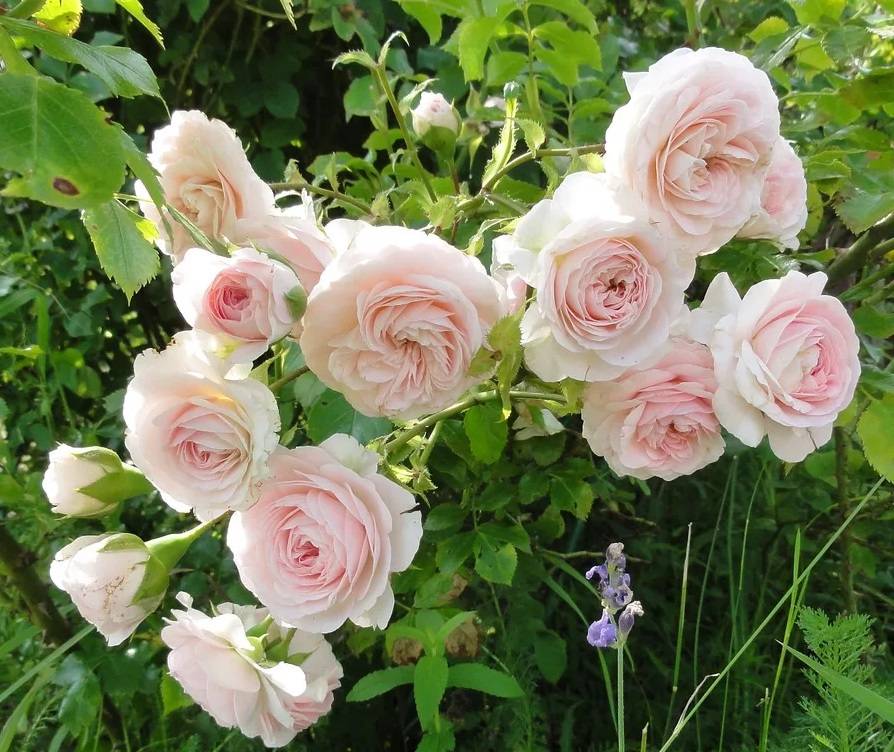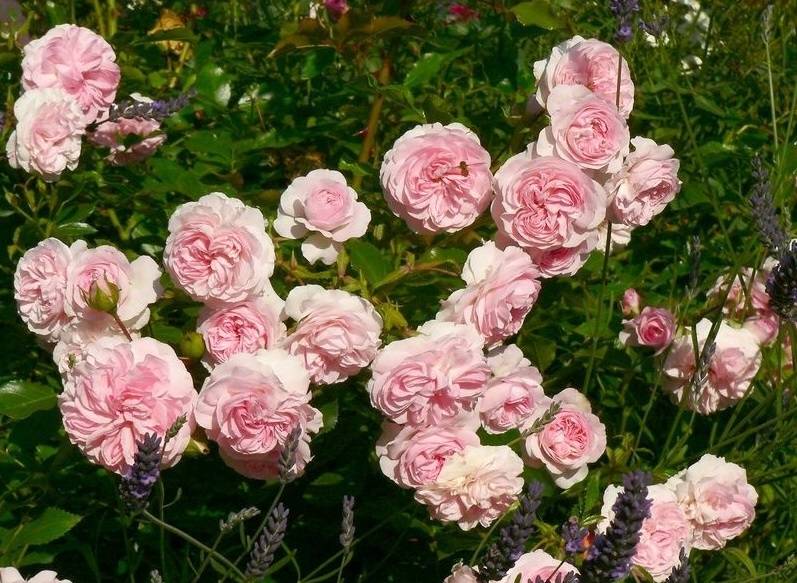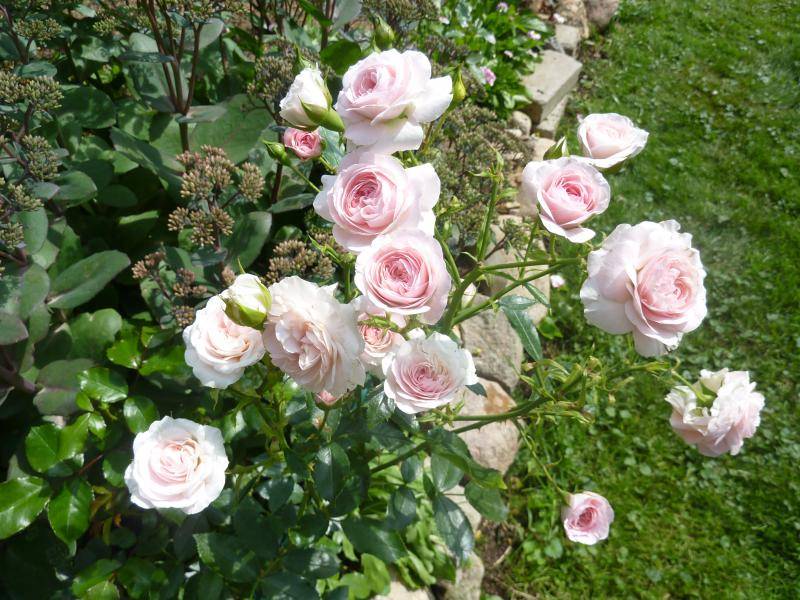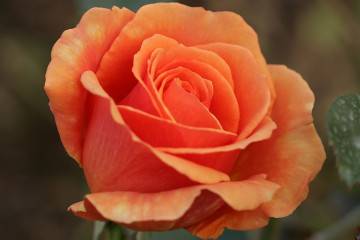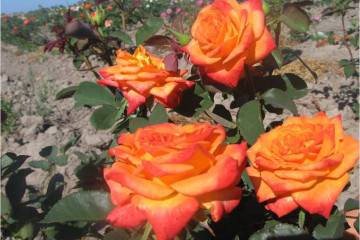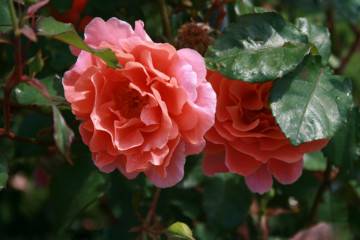Rose Larissa (Larissa) - what kind of floribunda is it?
Content:
Floribunda rose Larissa captivates at first sight with its delicate creamy pink buds. To grow this flower on your personal plot is within the power of every florist, but only subject to certain agricultural techniques.
Description of the rose Larissa
The variety was bred in the Cordesa nursery and presented to the world in 1998. He is also known in professional circles as Larissa, KO 98 / 1661-05 and KORbaspro. For its outstanding characteristics, the rose Larisa has repeatedly won prizes at various world rose-growing exhibitions and competitions.
The Larissa bush does not exceed 70 cm in height, but has long creeping shoots inherited from ground cover roses. The branches of the plant are covered with small leaves of bright green color. The buds are dense, consisting of 75 petals, when opened, they acquire the shape of a bowl. The flowers are densely double, with an uneven color from white at the edges to pastel pink closer to the center.
The positive qualities of the variety include:
- abundant flowering;
- good tolerance to high humidity;
- immunity to many diseases;
- unpretentiousness.
Among the disadvantages, gardeners note the too rapid growth of shoots, requiring regular pruning and burning of flower petals in the sun.
How to properly plant in open ground
It is recommended to plant rooted seedlings in open ground in a permanent place. It is better to purchase them in proven garden areas or get them vegetatively from an adult healthy plant.
Planting is carried out in spring or autumn. In the first case, the earth should warm up well, and in the second, it is necessary to carry out the procedure 3-4 weeks before frost. Only under such conditions will the seedling take root well.
Rosa Larissa requires placement in an open, sunny area, protected from drafts. Planting in the shade is not desirable, since the shoots will stretch too much without forming buds.
In the corner of the garden chosen for planting, the soil should be dug up and sand, humus and peat should be added to it, making it more nutritious. It will not be superfluous to add mineral fertilizers, and with increased acidity - bone meal. The sapling needs to remove damaged roots and cut off the shoots. Treat all sections with wood ash.
Planting procedure step by step
Planting Larissa is not difficult. The procedure includes the following steps:
- A hole is dug, its depth should correspond to the root system of the seedling.
- A drainage layer is laid out on the bottom. From above it is sprinkled with soil.
- The rose must be placed in a hole and carefully spread its roots.
- The roots are covered with earth.
- The soil is compacted.
- The plant should be well watered.
When planting is complete, the land around is mulched and a small canopy is created for the next couple of weeks, protecting it from direct sunlight.
Plant care
Larissa is unpretentious in care, so the agricultural technology for her cultivation is quite simple. It includes the usual procedures: watering, feeding, pruning and sheltering for the winter.
The rapidly growing Larissa needs regular, abundant watering. In this case, it is important not to allow waterlogging so that the roots do not rot. 2-3 days after irrigation, the soil under the bush is loosened and weeds are removed.
In the spring, rose Larissa is in need of fertilizing containing nitrogen. Before flowering, an actively blooming floribunda needs phosphorus and potassium. After the completion of the first wave of flowering, it is advisable to add superphosphate and potassium salt. In preparation for wintering, the plant is again fertilized with potassium.
It is not advisable to transplant a rose too often; it is better to initially choose a permanent place for it. If you cannot do without this, then the bush is removed from the ground very carefully, digging in with a root ball at a distance of 20 cm from the central shoots.
It is still better to cover the frost-resistant Larissa for the winter in order to protect it from weather surprises. The bush is covered with spruce branches and covered with a non-woven cloth.
Blooming rose
The flowering of Larissa is long and plentiful; the variety is referred to as re-flowering. The overgrown bush is almost completely covered with lush flowers, exuding a pleasant sweetish aroma.
Buds begin to form with the onset of summer and bloom almost continuously until autumn. Only with very careful observation can you notice short rest periods between the waves of flowering.
Larissa does not require special measures related to care during flowering. If the watering regime is observed, and the bush is fed in a timely manner, then it remains only to periodically remove the wilted flowers.
What to do if it does not bloom
There are several reasons why Larissa may not bloom:
- unsuitable landing site;
- violation of the rules for pruning, watering or feeding;
- weakening of the root system due to disease.
Flower propagation
Larissa can be propagated in any vegetative way. The easiest way to do this is by forming cuttings on the long, climbing shoots of the plant.
Layers are laid in the soil in May. For the winter, they are insulated together with the mother bush, and with the onset of the new season, they are separated and transplanted.
For rooting, a strong and flexible shoot is chosen. Next to the bush, they dig a groove 10 cm deep, put a whip in it, pin it and sprinkle it with earth. During the summer, it is necessary to moisten and carefully loosen the soil along the dug-in branch in a timely manner, then by the end of the summer there will be young growth.
Diseases, pests and ways to control them
Larissa is resistant to a number of common rose diseases, including powdery mildew and black spot. Harmful insects also rarely annoy the plant. Sometimes the appearance of a scabbard or a spider mite on the bushes is noted. To combat them, proven insecticides are used, for example, "Actellik" or "Fitoverm".
Elegant and refined flowers of the Larisa rose will help to decorate any garden, creating a romantic mood. Its unpretentiousness allows you to get a perennial plant of stunning beauty with a minimum of attention and care.
